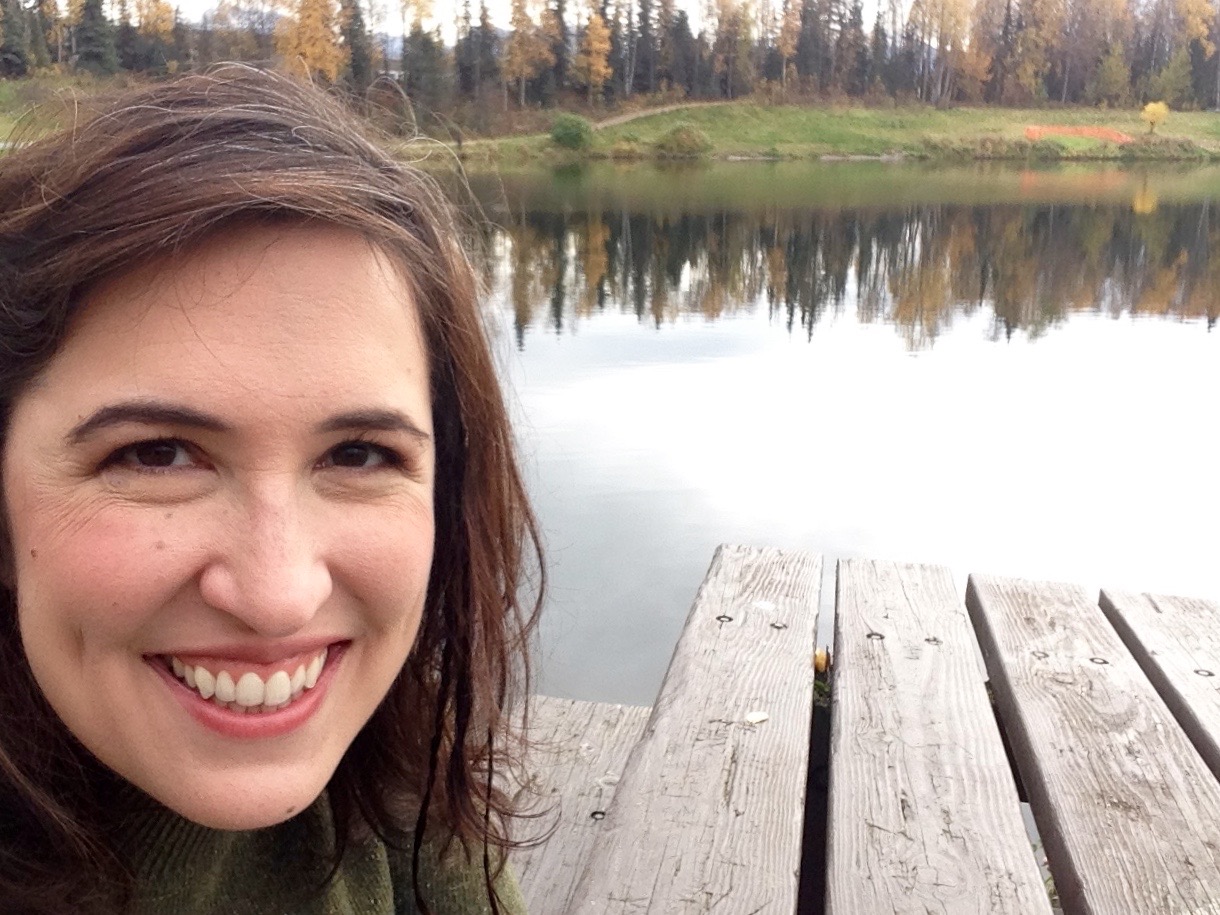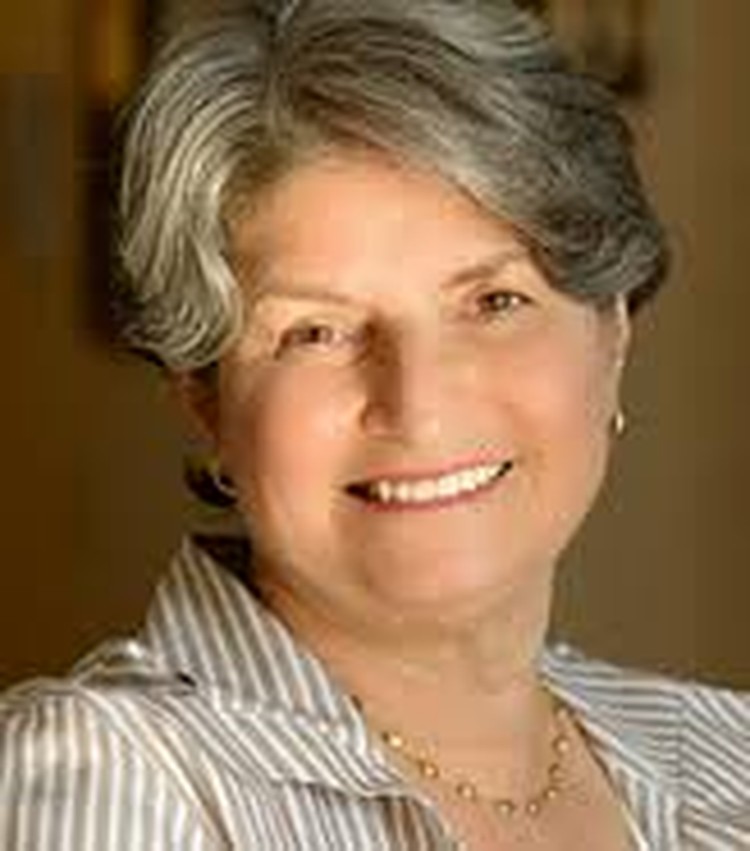This article introduces our new series on the future of aging: interviews with people who are experts in their fields and are also visionaries. We’re asking them to talk about what they believe will happen in the years ahead to change the experience of aging.
The fact that so many of us now live so long is a triumph for humanity, but there are a few drawbacks. For one thing, many of us will outlive our ability to drive—a devastating loss because with it goes much of our independence. Recognizing how important that is, Katherine Freund re-imagined transportation and found a way to provide convenient, affordable rides for older people who have given up driving. She’s at the forefront of change.
Her knees aren’t great. She uses a cane. She doesn’t walk as quickly as she used to. And the nearest bus stop is a couple of miles away. She promised her kids she wouldn’t drive. So what now?
Well, first things first: she gets out those reading glasses and puts on that thinking cap because it’s time to figure out the route. Red line? Blue line? Oh, there’s a quick underground connection. Run to catch it?
Um, no.
Oh, for Pete’s sake. Where are the car keys?
“Only about 2 1/2 percent of the trips that older people take in the entire country are on mass transportation of any kind,” says Katherine Freund, an advocate for improving transportation for elders.
That means, to get to the doctor and the grocery store, to see friends and beat isolation, most older people are driving—whether they should be or not.
Millions of boomers will have to give up their car keys in the next few decades.
In 1988, Freund and her family faced that reality from the other side of the steering wheel when an 84-year-old driver hit her 3-year-old son. Her son sustained a traumatic brain injury. “He was in a coma and on a respirator for three days,” she says. (He recovered but has lingering issues, including a tendency to get headaches.)
But instead of cultivating bitterness or vengefulness, Freund jumped into action. “I just really wanted to spare anyone else from such an experience,” she says. “The only way to feel better is to fix something.”
She began envisioning that fix—and ended up with a plan to change the world, one driver at a time.
Mission Impossible
Many older people just don’t have great alternatives to driving themselves. Even if they are willing to navigate mass transportation, rural and suburban areas may not have it. Taxis aren’t cheap. Adult children who could offer rides often live far away. And asking a neighbor for help? Elders would often rather stay home.
“They don’t want to say, ‘I can’t do this anymore,’” Freund says. “Older people want to say, ‘I’m independent, I’m proud, I can do it myself.’” Even if they shouldn’t.
After her son’s accident, Freund started brainstorming for a convenient, affordable alternative. Ideally: something with door-to-door service, cheaper than a taxi, and with specialized help for people with wheelchairs and walkers.
Impossible? That’s not the way she saw it.
Launching the Future
In 1995, Freund launched a small, nonprofit organization called the Independent Transportation Network. ITN provided relatively low-cost rides in private vehicles to people 65 and older in greater Portland, ME. Donations from individuals and organizations kept the rates reasonable.
In that first year, “we exploded with growth,” Freund says. After a newspaper article about the launch, “I got about 300 phone calls in the next two days, and the waiting list to use ITN started.”
In 2003, Freund took ITN national, calling it ITNAmerica. Today, the organization has about two dozen affiliates. Drivers offer door-to-door service within their communities, helping with walkers and wheelchairs. Many are volunteers who use their own cars and earn points toward future ITNAmerica rides for themselves or for someone else, such as a parent.
Since 2005, the Silver Century Foundation has given ITNAmerica a number of grants to support the organization’s national rollout and to fund research on mobility issues for older adults.
“I Use ITN”
Millions of boomers—the oldest will turn 80 in 2026—will have to give up their car keys in the next few decades. By continuing to expand ITNAmerica, Freund hopes to help bring about a revolution in the way they’ll get around.
Yet ITN is expanding more slowly than she expected. Challenges include fundraising and finding enough volunteer drivers. Plus, when she rolled out ITN nationally, she did so during “the teeth of the recession,” she says. “I mean, established nonprofits folded in that recession, and we were just an infant national organization.”
But Freund believes that over the next couple of decades, services like hers will grow quickly. By then, “in the same fashion that people will now say, ‘I own a Toyota’ or ‘I own a Ford’ and feel a sense of brand loyalty to that,” older people will instead be saying, “I use ITN” or another car service, she says.
We talked with Freund about her vision for the future and how she’s racing to make it happen—soon.
SCF: First of all, your son turned 30 this year. How is he doing now?
KF: He is healthy and happy. He just completed a Tough Mudder obstacle event. He has a tendency to get headaches, and he can’t look at bright lights or hear loud sounds. When he was little, the doctor said we should always be careful not to “rattle his squash,” and he still always takes care.
All in all, he is my miracle boy. He is the chief operating officer for Common Census, a software company for employee benefits.
SCF: We’re glad to hear that.
As you’ve worked to change transportation over the years, you seem to have found that not only are there few federal dollars for funding public transportation but the subject is not a popular one in the political realm. What will communities need to do to ensure that people can remain mobile as they age?
KF: The first step is basic community awareness of the issue. I think people assume transportation the way they assume oxygen, and they assume that there are going to be supermarkets around, where they can buy food. I don’t think people take a lot of personal responsibility for planning for transportation.
Part of this is that we’ve just added so many years to our lifespan in such a short period of time. It’s like our understanding of needs hasn’t caught up to reality or how long people live.
That’s the first step. So once that happens, there is planning for the built environment—sidewalks and streetlights and curb cuts. That’s happening a little bit, but it needs to happen more.
And then public policy needs to remove barriers to the use of private resources.
SCF: For example?
KF: Right now in a lot of cities, it’s illegal to charge a fare for a ride delivered by a volunteer. So livery laws are not current with current technology and current transportation solutions.
You cannot solve problems long-term by giving everything away or by expecting the government to pay for it. So those old-fashioned livery laws are a barrier to sustainable transportation.
SCF: Is public transportation for older adults becoming a private-sector responsibility?
KF: It is inevitably going to become more of a private—I don’t want to say responsibility; let me say private opportunity.
It used to be that you could only create any kind of efficient community mobility by putting people together in a high-occupancy vehicle—bringing the people to the place where that vehicle is, or to the bus stop, right? And putting all those people in that great, big vehicle together and moving them together.
But people now live in these geographically dispersed population patterns because they’ve owned cars for 100 years and they live in all these suburban communities. You don’t have the density for those big, mass-transit solutions. It just doesn’t work in suburban America, which is where most older people are. Three out of four older people live in rural and suburban communities.
So what’s happened is—and this is what’s going to happen in the future too—that people use information technology to know where is the car when, and where is the person when, and match them up.
You’ve read about Uber and Lyft and all these ride services. They’re a different form of the same thing that ITN is doing. They’re all different versions of creating community mobility without using public money—using privately owned transportation capacity.
SCF: Your plan is to eventually launch ITNEverywhere, which will make rides available through online software to people of all ages. Private cars will be available for rent too. It sounds like all of this could supplement mass transit—even substitute for it in rural areas.
KF: The growth of this “share economy” makes it less necessary for services to be provided by the government, which is a good thing because the tax base is shrinking. The government can’t continue to fund everything. That’s kind of an antiquated model.
There’s still a role for it. But we all know that Medicare doesn’t cover all your medical bills. Social Security doesn’t really pay for retirement. It’s just a piece. It’s the same thing with transportation. Public transportation is just a piece.
SCF: Thinking of this share economy, along with other car services that are succeeding worldwide—Uber, Lyft, Sidecar—is this concept going to shape travel as a whole in the near and distant futures?
KF: That kind of economy is escalating. You can rent power tools from somebody now. You can rent the use of somebody’s car. And they don’t have to be Avis or Hertz; you can just rent a person’s car for a couple of hours now. There are all different ways that people are sharing. Well, transportation is a very big part of this because there is so much capital in transportation and it is sitting unused a lot of the time.
So transportation for older people is going to change. It’s really good news.
SCF: Since we’re thinking futuristically, how do you think driverless cars could play a role in mobility, once they become available to the public?
KF: I think they can play a role, and I think they can help some older people.
[But] a lot of the people at the advanced age that we currently serve need more than just a ride. So even if a vehicle is driverless, it’s not enough. For our population, for example, half the people we serve have some sort of mobility impairment. They have a cane, they have a walker, they have a visual impairment. They need to lean on someone’s arm when the sidewalk is icy. They need somebody to help them with their packages, or they need a little assistance up the stairs.
So a driverless car is going to be some help to some people, but that human piece is going to remain a factor. Right now, often, the driver provides that piece. It may be that with a driverless car, a personal assistant or a friend can provide that human piece.
SCF: How bad could things be for older adults who wish to remain mobile if communities and governments don’t change their approach to transportation?
KF: Really very bad. It means a whole bunch of bad things.
For people who continue to drive, it means that they’re really at risk for getting hurt or killed. And it also means that they’re at risk for, at the end of their long life, being responsible for hurting someone else. How’d you like to do that? And sometimes they hurt their family members and their neighbors, their spouses, their children. It’s a bad thing.
So that’s from a safety perspective. Now, if they stop driving when it’s no longer safe and there are no solutions, well, people will be prisoners in their houses. They will not have access to good nutrition. They will not have access to social interaction. They will not have access to health care.
It’s a very significant, life-changing loss not to have mobility in the last 10 years of your life.
SCF: What is your most hopeful vision of travel in the next five, 10, 20 years?
KF: My big, big, big vision is I would like there to be a national endowment for transportation—private resources to help foster private transportation solutions.
I would like public policy—at every municipal, county and state level—to remove the barriers to using private resources, whether it’s trading your car or charging a fare [for a ride] delivered by a volunteer or making sure that insurance companies do not unfairly increase insurance premiums for people who want to participate.
SCF: You’re also trying to raise awareness of the fact that there are few good alternatives to driving for older people.
KF: I want to open up everybody’s mind about this issue—that it is not somebody else’s issue. It is every family in America.
We are aging with the automobile for the first time in history. Everyone who experiences this, they all think that they are alone, when it is universal.
And this is a very, very solvable problem—the answer is literally parked in everybody’s driveway.
If you look around and see older people who need help, offer them a ride because they don’t want to ask. They will sit home without groceries. They will miss doctors’ appointments. Suggest they bake something for you in exchange for the ride. But just open your eyes and help somebody.
Conversation edited for length and clarity.

Leigh Ann Hubbard is a professional freelance journalist who specializes in health, aging, the American South and Alaska. Prior to her full-time freelance career, Leigh Ann worked at CNN and served as managing editor for a national health magazine. A proud aunt, Leigh Ann splits her time between Mississippi and Alaska.



